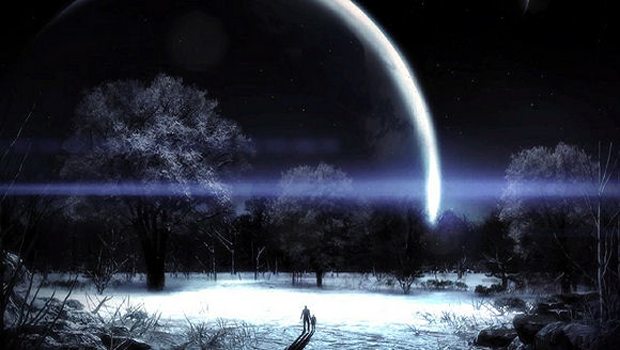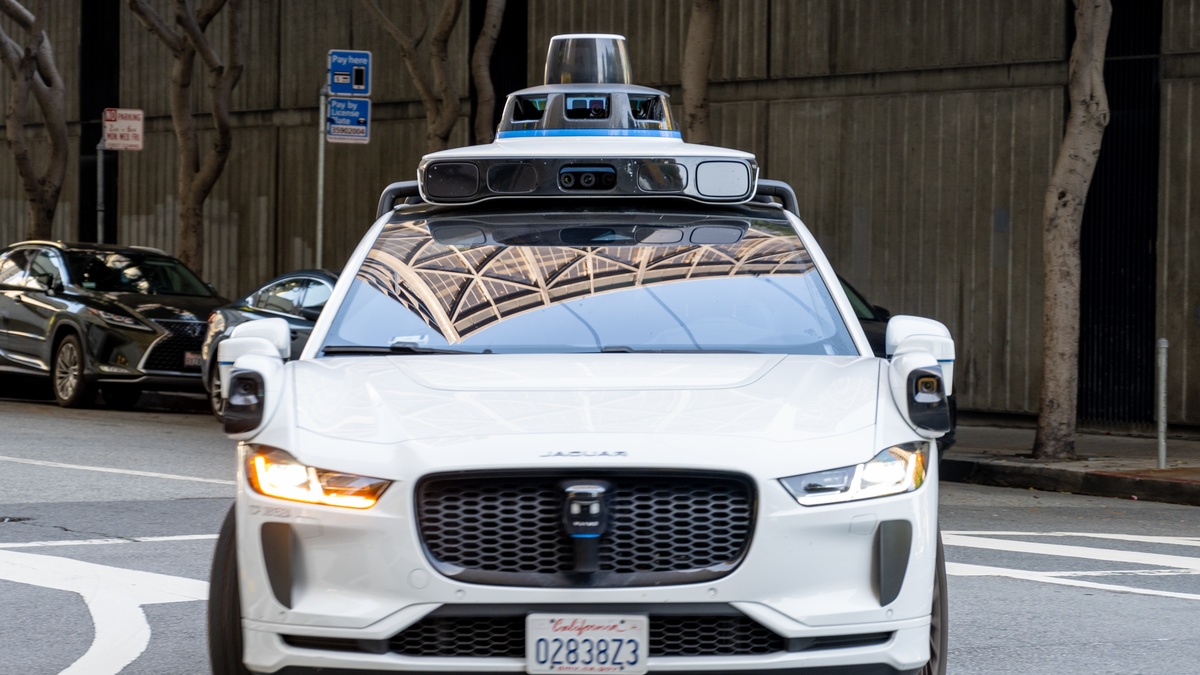Last week, most of you eagerly played through the Mass Effect 3 Extended Cut naively hoping, even praying that BioWare had done more than simply add dialogue and supplementary cinematic scenes to what is now infamously renowned as one of the most botched endings in the history of gaming. For the second straight time, the majority of you once again walked away disappointed, saddened, or perhaps even downright outraged.
Regardless of the criticism Mass Effect 3’s ending damn well deserves, BioWare is certainly worthy of praise for owning up to their mistakes and admitting that some sort of fan recompense was in order. The fact that an “Extended Cut” for Mass Effect 3 is even available right now implies that BioWare, though they won’t admit it publicly, knew deep-down that they had shipped an ending that at the very least was incomplete.
Yet BioWare’s second attempt at providing the Mass Effect trilogy with the closure and resolution it deserves largely falls short due to a complete failure to recognize what ailed it the first time around: blatantly obvious plot holes and writing that you’d expect to find at the bottom of a paper stack topped with rejected movie idea pitches. Chalk it up to redundant gamer whining if you will, but the community is less concerned about not getting the ending they’d wished or hoped for, and is rather outraged at the fact that BioWare has chosen to leave major errors in continuity and narrative even after taking a second look at the game’s conclusion. So while BioWare metaphorically tied a nice and shiny bow onto Mass Effect 3’s ending with the Extended Cut, no DLC will ever be able to remedy the fact that the ending was an abomination to begin with. Slapping some paint and new siding on a house that has a decrepit and decaying foundation will undoubtedly make the presentation better, yet it cannot mask the fact that the house itself is in need of more than an aesthetic update.
Partly what baffles those of us who have been fans of the series since its inception is how BioWare could overlook the evidently inconsistent writing, climaxed with the introduction of the Catalyst character who almost served as a form of dues-ex-machina for the developers. It’s as though they couldn’t find a way to end the Reaper threat logically or rationally while providing gamers with the element of “player decision” that had come to characterize and even define the franchise. The result? A contrived and forced finale that was neither sensible nor satisfying. What’s perhaps even more baffling is the fact that BioWare did not take the fan-manufactured “Indoctrination Theory” and run with it. The Mass Effect community gave the heavily criticized developers a glorious out. One that would have turned a laughable conclusion into a twist ending that would’ve caused us to step back in awe-inspired admiration and would have catapulted BioWare to legendary status. But I suppose the concept of creative control is just as good, eh BioWare?
I struggled with the idea of writing and publishing an open letter to BioWare that listed the community’s remaining and justifiable gripes following the release of the Mass Effect 3Extended Cut, but ultimately restrained myself in favor of a much more lighthearted showcasing of some of the ending’s more obvious oversights. Mainly, because Mass Effect 3 never needed an “Extended Cut” to begin with. It needed its entire third act to be thrown out and re-written, something that BioWare would never have been willing to attempt as they continue to scream, “Creative freedom, dammit!” to the hordes of gamers calling for them to do so. Besides, I have already expressed my extreme disappointment with the Mass Effect 3 ending once before. I don’t have the inclination or the wherewithal to do so again.
So, here are five plot holes that remain unexplainable even after the release of the Mass Effect 3 Extended Cut. Try to find some humor in them, because at the end of the day, if you’re not laughing, you’re crying. Take solace in the fact that that there are other stories to be told and other games to be played, my friends. If you don’t move on, you’ll regret it. Maybe not today, maybe not tomorrow, but soon, and for the rest of your life. What about our enjoyment within the Mass Effect universe you ask? We’ll always have Mass Effect…and Mass Effect 2… and the majority of Mass Effect 3. This Casablanca reference doing anything for you? No? Right then, Mass Effect 3 and its ending plot holes.
1. In addition to uniting all races in the galaxy, add “can breathe in space” to the list of cool sh*t Shepard can do.
– When Shepard is elevated to meet the Catalyst, he makes the transition from inside the Citadel to outside (Space) without the help of any equipment or additional gear. He then goes on to have a conversation with the avatar as if he’s used to being lectured in a vacuum atmosphere. No helmet. No mask. Nothing but the tattered battle suit on his back.
For those of you citing “Mass Effect fields” as a simple and appropriate answer, I point you to the end events of the original Mass Effect in which Shepard found himself on the outside of the Citadel. In this similar circumstance, there was neither air, nor gravity. As a result, Shepard can be seen wearing his mask. Yet when Shepard converses with the Catalyst atop the Citadel in Mass Effect 3 he is magically without the need for a mask or helmet.
Let’s assume just for a second that oxygen can somehow be transported from the wards to the outside (which is highly doubtful considering the arms have been closed). Why would the Reapers leave the oxygen flowing? We’re led to believe that the Reapers are an all-powerful race of an ancient and colossal nature, yet they just forgot to push the one button that would ensure their victory? Oxygen (and the magical addition of gravity in Space) is the only thing allowing Shepard to hobble toward that red beam of light and destroy the largest and most powerful threat in the galaxy. You’d think flipping a switch would be easier than conquering an entire star system.
2. Harbinger calling a timeout in battle to allow Shepard to say goodbye to his crew aboard the Normandy.
– While not a plot hole, the new scenes of the Normandy picking up your injured squadmates while Harbinger blows everything else to hell are incredibly silly.
You’re running toward the Conduit in what is supposed to one last epic act of desperation to get to the Citadel and activate the Crucible. Initially, it is. Harbinger’s laser is taking out every last bit of the remaining hammer squads. Transport shuttles are being blasted from the sky and tanks are being thrown from their intended path as fiery debris soars overhead. Suddenly, one of your team members goes down. You stop your run to help him/her take cover behind a nearby tank. Then, hilarity ensues.
As if Harbinger pauses to say “Aww, that’s kinda nice”, he allows Joker to swing in with the Normandy, pick up the downed as if he’s performing a routine evac. with no more danger present than a pea shooter and a few potato guns, and give Shepard the time he needs to say his heartwarming goodbyes. If the whole concept of the largest ship on the battlefield swooping down to pick up soldiers amidst destruction on a cataclysmic scale weren’t ludicrous enough for you, BioWare even gives you time to pick dialogue options. As soon as you’ve said your farewell, you continue your run to the Conduit and the chaos resumes.
The question as to how your squad made it back aboard the Normandy was one of the glaring holes in the original ending, yet against all odds, BioWare made the narrative even more illogical by adding in this gem. We’re supposed to believe that Harbinger can pinpoint every other Alliance unit on the battlefield except the biggest one, which also belongs to a human for whom he contains great hatred and resentment toward? Someone should have assumed direct control of the writing staff.
3. Anderson manages to make it up to the Citadel milliseconds after Shepard.
– In the original ending, one of the more puzzling gaps in the narrative was that of Anderson making it to the Conduit, though we clearly only saw Shepard as the lone survivor. The Extended Cut adds dialogue after Shepard reaches the Citadel as Anderson claims he “followed you up.”
Had BioWare shown Anderson making it to the beam ahead of Shepard, they could have very easily erased this irrationality. In this scenario, it would be very plausible to believe Anderson went up and came out in a different processing room, yet managed to make it to the main chasm as a result of the Citadel’s structure consistently moving (I like to think of it in terms of the moving staircases at Hogwarts). However, it was Shepard that went up first, and it takes him a long time to do so. He falls, slowly limps his way toward the beam and even manages to take out a few Husks and a Marauder in the process. When he does finally make it up, Anderson radios-in just seconds later. We’re supposed to believe he was mere steps behind Shepard and didn’t call out to him so they could go up together? Additionally, Alliance radio intel would tell us only Shepard made it to the Conduit:
“God…they’re all gone.”
“Did we get anyone to the beam?
“Negative. Our entire force was decimated.”
Admiral Hackett then goes on to say, “Holy shit. He did it. We’ve got reports that someone made it to the Citadel.” The fact that Hackett later addresses Shepard directly when the Crucible doesn’t fire tells us that Shepard is the “someone” that the Alliance was referring to. How is it that Hackett knew Shepard made it to the Citadel, but not Anderson who was apparently a foot away from him when he went up?
4. “Tis’ but a scratch!” – Shepard lives.
– Those of you who finished the game with a high enough EMS and chose the “Destroy” ending have now seen this scene not once, but twice. The fact that BioWare did not eradicate the scene in which Shepard draws breath as the N7 armor is seen surrounded by rubble in what is presumably Earth is not a plot hole. It’s an absurdity.
There’s really no explanation needed for this one. It is a complete and utter insult to the intelligence of gamers to even imply or leave the smallest inkling of an indication that Shepard could have survived the Citadel’s explosion and his subsequent fall back into orbit, let alone in one piece. BioWare ought to release one more piece of ending DLC just for parody’s sake. But this time, the Normandy crew is replaced by members of Monty Python, Shepard ditches his N7 gear for the Black Knight’s suit of armor, and yells, “It’s just a flesh wound!” as he climbs out of the rubble and dusts himself off.
On a side note, it’s safe to assume that humanity cleared the massive wreckage scattered throughout London as they began the first phases of the rebuilding process. Are we to believe no one found the body of Shepard and checked his pulse? Apparently all of the British paramedics were killed during the war.
5. Introduction of the Catalyst directly contradicts the entirety of the original Mass Effect.
– Without attempting to explain the elaborate and mostly irrational mythology that BioWare inserted into the last five minutes of Mass Effect 3, the abridged version is this: the Catalyst is an advanced AI that represents the collective conscious of all Reapers. He tells Shepard that the Reapers were created to prevent organic life from wiping itself out and that the creation of synthetic life will always result in the destruction of the creator. To prevent this, the Reapers come around every 50,000 years to harvest advanced civilizations, creating a new Reaper, while leaving the smaller societies to develop and evolve.
The problem with the concept of there being a sophisticated AI that represents the communal thought of the entire Reaper race is that it conflicts with the motivations of Sovereign in Mass Effect. If the Catalyst has been on the Citadel for thousands of years, and indeed shares a collective intelligence with all Reapers, why would it be necessary for an actual Reaper to be present? According to its logic, the Catalyst should have known about the existence of any and all space-faring civilizations, and should have been able to alert the Reapers without the help of one. There’s simply no overcoming the idea that had the Catalyst been one of BioWare’s narrative concepts from the earliest stages, and not a manifestation of poor and frustrated writing at the end of a circuitous plot, it would have alerted Reaper forces to return to the Citadel immediately after the defeat of Sovereign without the need of the Keepers to send out the signal.
The Catalyst’s mere existence highlights BioWare’s inconsistent writing and narrative across games. Instead of settling on one singular conclusion to a plot that had become utterly convoluted, they introduced some pixilated kid said to embody the collective intelligence of all Reapers. Within minutes BioWare attempted to twist and contort an enemy that we had believed personified evil and malice for the betterment of two and a half games, into a controlled synthetic species whose actions were simply misunderstood.
Part of what made the Reapers such a well-received enemy in the past was their enigmatic nature. We knew very little about them other than the fact that they were an ancient race of colossal beings, containing immense power and with very little regard for any civilization that attempted to oppose them. Does Sovereign or Harbinger for example, uttering such phrases as, “You will know pain, Shepard” come across as beings with misconstrued intentions and who are uninterested in war? Quite the opposite. The Reapers’ characterization during the events of Mass Effect and Mass Effect 2 led us to believe that they were sadistic monsters who took pleasure in bringing about the brutal and violent end of the galaxy.
Thus, it’s difficult to view the end of Mass Effect 3 and the creation of the Catalyst as anything but an artificial solution manufactured by BioWare in a desperate attempt to provide an unnecessary mythos to an enemy that was better served without it. The Catalyst undoubtedly served as BioWare’s hasty and ill-advised resolution to a narrative they had lost track of. This deus ex machina, of sorts, offered a set of quick, immediate solutions to the seemingly unsolvable crisis of the Reaper threat. The Catalyst’s inception not only disregarded hundreds of hours of narrative logic, it turned what was once an enthralling piece of interactive entertainment into a muddled mess of a story.











Published: Jul 4, 2012 10:21 am